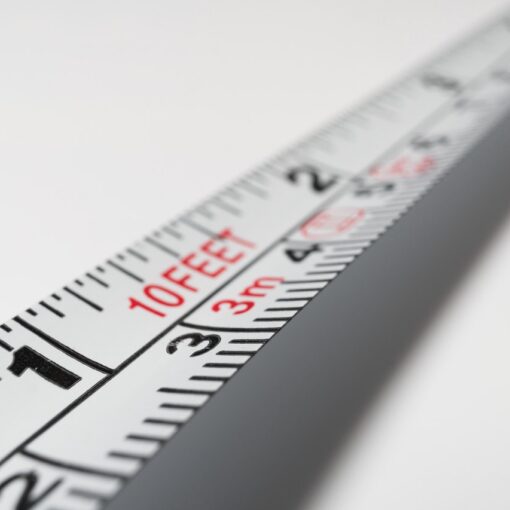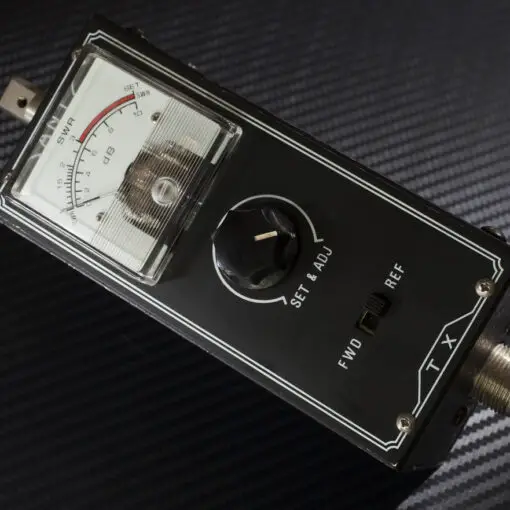Ham radio, also known as amateur radio, connects people through a variety of frequencies across the globe. It is a popular hobby that allows enthusiasts to experiment with electronics and communication technologies, as well as provide crucial communication in times of emergencies. RV travelers often turn to ham radios for not just a form of entertainment, but also as a reliable source of communication on their journeys where cellular signals can’t reach.
For those looking to integrate this form of communication into their RV setup in 2024, the market offers a range of ham radios that suit the unique needs of an RV lifestyle. Ideal ham radios for RVs are compact, simple to install, and offer clear reception. They are designed to withstand the varied environments encountered during travel and provide strong transmission capabilities to stay in touch with the world or reach out for help when off the beaten path.
Selecting the right ham radio for your RV largely depends on factors such as power output, frequency bands, ease of installation, durability, and size. The radio’s ability to access a wide range of frequencies is crucial, as is the user interface which should be friendly for both beginners and seasoned users. Additionally, the antenna’s quality and the ability to withstand the rigors of travel can significantly affect the radio’s performance.
We’ve dedicated ourselves to evaluating various ham radios that will meet the needs of RV enthusiasts in 2024, seeking a balance of functionality, durability, and price. Our extensive research aims to help you stay connected no matter where your travels take you.
Top Ham Radios for RVs in 2024
Our curated selection of ham radios for RVs in 2024 offers a range of devices to suit the needs of traveling amateur radio enthusiasts. With advancements in technology, these picks provide improved reception, enhanced features, and user-friendly interfaces for your communication needs on the road. Whether you’re connecting with others during your travels or staying prepared for emergencies, we’ve identified the options that stand out for their reliability, performance, and value.
RecPro RV Stereo System


Upon examining the RecPro RV Stereo, we find it to be a savvy upgrade for RV owners looking to enhance their auditory experience without monopolizing limited space.
Pros
- Streamlined design fits unobtrusively in your RV
- Versatile connectivity options including Bluetooth and USB
- Straightforward to install with a clean, user-friendly interface
Cons
- Limited volume capacity when utilizing inputs aside from radio
- HDMI port functionality is restricted to pass-through only
- Some issues with background radio interference during Bluetooth use
We’ve taken the RecPro RV Stereo System for a test, and its compact design means it slips into your recreational vehicle like it was made to be there, offering your travels a generous auditory boost. The Bluetooth feature paired seamlessly with our smartphones, which means we could indulge in our favorite playlists without fuss.
The setup is intuitive. With minimal effort, ours was up and running, the side panels snapping into place hiding the screws — a nifty feature for a tidy finish. It’s a relief to bypass the often over-complicated installations of bulkier systems.
We did, however, notice that while the radio function delivers well, attempting to crank up the volume with other inputs just doesn’t hit the desired level. For those who delight in rich, robust sound, this might be a sticking point. Plus, those planning on utilizing the HDMI port will need to consider that it’s designed purely for visual pass-through, without the ability to convey audio signals to the stereo system itself.
And while vibing to our various playlists, a minor gripe surfaced. When switched to Bluetooth, faint strains of the radio channel persisted in the backdrop. While not a dealbreaker, it’s something for potential buyers to note if they prefer their audio crystal clear.
In sum, the RecPro RV Stereo is a capable and stylish choice for RV enthusiasts. However, those with discerning ears, or a reliance on HDMI audio, might find its limitations a tad inconvenient.
NEPIVEL Emergency Radio


We find the NEPIVEL Emergency Radio to be an indispensable travel companion, offering peace of mind during RV adventures with its multifunctional capabilities and robust power storage.
Pros
- Robust power supply with a high-capacity battery and multiple charging modes
- Comprehensive range of functions, from weather updates to SOS signals
- Compact, durable, and thoughtfully designed for portability
Cons
- Solar charging efficiency may vary by weather conditions
- The compass is adequate but can be slow to respond
- Limited to small device charging due to output capacity
Having a reliable ham radio during travel can be a lifesaver, and the NEPIVEL Emergency Radio has proved its worth on our recent RV escapades. Its 12,000mAh battery ensures that we have an emergency power source to keep our phones charged and stay connected in the wilderness.
During a spontaneous off-grid outing, the solar charging feature of this device was a game-changer. Although it’s dependent on sunlight, the dual panels provided a decent charge, offering reassurance that we wouldn’t be left in the dark. On overcast days, the hand crank serves as a reliable fallback to generate power.
The 7-in-1 functionality of the NEPIVEL Radio has something for every situation. Whether we needed the LED flashlight to navigate late-night snack runs or the NOAA radio feature to check on incoming weather, this device never missed a beat. The built-in compass, albeit not the quickest, has guided us effectively through unfamiliar territory.
Sure, it’s not a powerhouse for heavy-duty charging needs, and if you’re relying exclusively on solar power, be prepared for the performance to ebb and flow with the clouds. Yet, for day-to-day needs and common emergencies, this little grey box has delivered consistently.
One of our favorite experiences was tuning into a clear AM/FM signal even in a remote location, while the speaker dished out impressively crisp audio. The automatic search frequency function skimmed through the channels quickly, finding the strongest signal available without any fuss.
The NEPIVEL Emergency Radio is light enough to carry around and tough enough to handle our adventurous lifestyle. The thoughtful electric display keeps us informed about the remaining battery life, and the compact form factor doesn’t eat up valuable space, which is a big plus in an RV.
When you weigh the pros against the cons, this emergency radio emerges as a robust companion for any RV enthusiast looking to add a layer of safety and convenience to their travels.
TIDRADIO TD-H8


With an impressive blend of power and tech-savvy features, the TIDRADIO TD-H8 is a top contender for enhancing your RV ham radio adventures.
Pros
- Boasts a robust 10-watt output for extended range communication
- Integrates innovative wireless programming via smartphone for on-the-go convenience
- Equipped with a generous 2500mAh battery ensuring lengthy usage periods
Cons
- Some users may find the Bluetooth app less intuitive than traditional programming methods
- Wireless programming may be less reliable in areas with poor mobile network coverage
- Larger screen and powerful features can demand a steeper learning curve for new users
After hours of chatting with fellow ham radio enthusiasts from our RV, we’ve found the TIDRADIO TD-H8 to be a reliable companion. Its powerful 10-watt output has been indispensable for maintaining clear communications over vast distances which is vital when exploring remote locations.
The convenience of wireless smartphone programming has transformed our setup experience. Gone are the days of lugging around a laptop and assorted cables—the TD-H8 allows us to make quick changes directly from our phones. Moreover, the satisfaction of tweaking channels while nestled by the campfire cannot be overstated.
The battery life on this unit is noteworthy. Whether we’re keeping in touch with nearby RVers or scanning for weather updates, the 2500mAh battery comfortably powers through a full day’s use. Although we brought along a spare battery, we’ve seldom had to switch them out, thanks to its enduring power reserve.
Despite these benefits, some of our RVing pals have struggled with the Bluetooth app, citing a preference for traditional programming methods. While wireless programming is a breeze for some, others in remote areas have reported connectivity hiccups, though these issues were few and far between.
The TD-H8’s interface, with its large color screen, makes for a pleasant user experience, but the complexity might be daunting for newcomers to the hobby. However, with a bit of patience, acclimating to the system’s intricacies is an educational journey.
We highly recommend the TIDRADIO TD-H8 for those who value power, innovation, and extended usage in their ham radio equipment. It has proven to be an asset on our travels, assuring that we stay connected wherever the road takes us.
QYT KT-8900R Tri-Bander


If you’re seeking a compact, efficient companion for your RV expeditions, the QYT KT-8900R makes for a reliable choice.
Pros
- Clean audio quality
- User-friendly programming setup
- Strong build tailored for RV use
Cons
- Modest output power
- Learning curve for beginners
- Limited advanced features
Recently, we had the chance to put the QYT KT-8900R through its paces, and we must say, it’s quite the performer. In the confined space of an RV, this tri-band mobile radio holds its ground. It boasts a solid build, an aspect we appreciate considering the wear and tear of road trips.
Programming the QYT KT-8900R is less of an ordeal than we expected. A trip to the QYT website, a quick download, and we were set up in no time – even from the comfort of our RV. The user manual lays out instructions clearly, making it accessible for ham radio enthusiasts of all levels.
Audio output deserves praise. Whether we were transmitting or receiving, the clarity was noteworthy. Given the variety of environments an RV can venture into, reliable communication is non-negotiable, and this radio doesn’t disappoint. On the flip side, don’t expect it to pack the punch of higher power units – 25 watts is adequate for most situations, but it won’t break any records.
While the QYT KT-8900R might not be bursting with advanced features, its simplicity is its strength. It does the essentials exceptionally well, which we find refreshing. After all, when navigating the roads and keeping in touch with the world, we appreciate equipment that just works, without any fuss.
TIDRADIO TD-H8


Our team finds the TIDRADIO TD-H8 stands out as a sturdy, long-range communication tool, perfect for any RV enthusiast’s kit.
Pros
- Stellar battery life keeps us connected for long stretches
- Bluetooth programming simplifies setup directly from our smartphones
- Crystal-clear audio quality elevates our communication experience
Cons
- Lack of water resistance raises durability concerns
- Initial setup might be tricky for beginners
- The included manual could provide clearer instructions
Our hands-on experience with the TIDRADIO TD-H8 was quite impressive when we were out exploring rugged landscapes with our RV. Its extended 2500mAh battery life is a game-changer, ensuring we stay connected even during lengthy excursions without the constant need for recharging.
The convenience of Bluetooth programming via the accompanying app made it simple for us to program it on the fly. We were able to customize channels and settings seamlessly, without requiring extra equipment, directly from our smartphones—a significant advantage for tech-savvy travelers or those who prefer a modern approach.
Nevertheless, we did note the radio isn’t water-resistant, which could be a drawback when encountering inclement weather. Caution is advised during use around water bodies or in the rain. Additionally, while seasoned ham radio users would find the setup straightforward, new users might experience a learning curve—though the hiccups are minimal and manageable.
In conclusion, the TIDRADIO TD-H8 has proven to be a robust addition to our communication gear. Whether it’s keeping in touch on remote trails or ensuring clear transmissions for coordinated travel, this radio checks the right boxes in performance and usability, making it a top contender for our RV adventures.
Buying Guide
Understanding Your Requirements
We first need to evaluate our specific needs for a ham radio in an RV setting. Consider factors such as the size of the RV, power limitations, and the type of traveling we do—whether it’s primarily within national borders or international.
Key Features to Consider
Then, we focus on the key features that will ensure the best performance and convenience:
- Frequency Bands: Determine which frequency bands are most relevant to our travels, and ensure the radio supports those.
- Power Output: Higher power allows for better range but consider the power supply in the RV.
- Size and Weight: Choose a model that fits comfortably within our RV’s space constraints.
- Ease of Installation: Look for radios that are easy to install with clear instructions and minimal required adjustments.
Usability
Ease of use is critical in an RV, so we look for:
- User Interface: Simple, intuitive controls are a must.
- Display: A clear, easy-to-read display is helpful, especially in various lighting conditions.
- Memory Functions: Presets for frequently used frequencies save time.
Additional Features
We may want to keep an eye out for:
- GPS Capabilities: For location tracking and emergency situations.
- Weather Alerts: To stay informed about severe weather conditions on the road.
- Automatic Tuning: For ease of finding and setting frequencies.
Durability and Build Quality
We should verify that the radio is built to withstand the rigors of RV travel, including resistance to vibration and variable temperatures.
By paying close attention to these aspects, we’ll be well on our way to selecting a ham radio that fits our RV needs for 2024.
Frequently Asked Questions
In our exploration of ham radios for RVs, we consider range, technology advancements, ease of operation, reliability, emergency use, and integration into existing communications setups.
How do I maximize the range of my ham radio in an RV setting?
To maximize the range of our ham radio while traveling in an RV, we ensure proper antenna installation—ideally on the exterior of the RV for maximum height and least obstruction. We also check that our radio’s power output is appropriately calibrated for the types of communication we plan to pursue.
Are there any recent technological advancements in ham radios for 2024?
Recent advancements in 2024 ham radios include enhanced digital signal processing for clearer transmissions and integrated GPS for precise location tracking. Additionally, many models now boast improved power efficiency and compatibility with various digital modes.
What features should I look for in a ham radio for my RV to ensure ease of operation?
For ease of operation in our RV, we look for ham radios with user-friendly interfaces, such as touch screens or voice-activated controls. We also value customizable buttons and presets that allow us to quickly access frequently used functions and channels.
Which manufacturers are known for producing the most reliable ham radios for RV enthusiasts?
Manufacturers known for reliability in the ham radio space include Icom, Yaesu, and Kenwood. These brands consistently offer durable models with robust features that cater to the RV lifestyle and our need for reliable communications on the move.
Can ham radios used in RVs also serve for emergency communications?
Yes, ham radios in RVs are an invaluable tool for emergency communications. They allow us to access various emergency networks, such as the National Weather Service and local search and rescue frequencies, ensuring we remain connected in unforeseen situations.
How do I integrate a ham radio into my RV’s existing communications setup effectively?
To effectively integrate a ham radio into our RV’s communications setup, we plan the installation to minimize interference with our existing devices. We also ensure the radio is accessible from our RV’s control center and that antennas are positioned to avoid obstacles that can impede signal transmission.





